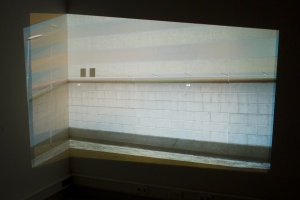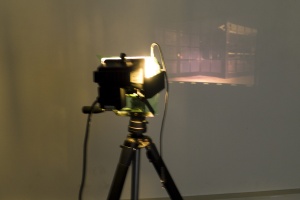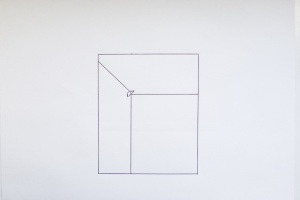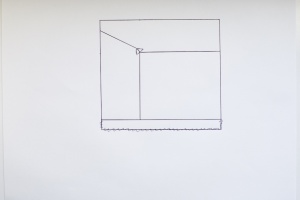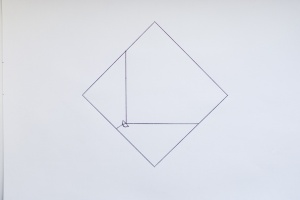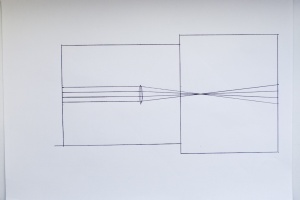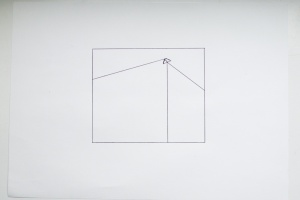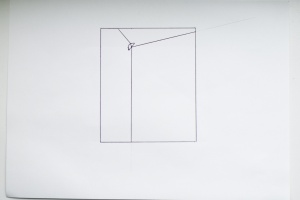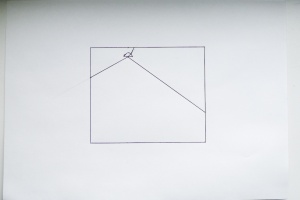User:Lucian Wester/Final Project Proposal
[title]
General Introduction:
My working method is strongly related my investigations into photography. I might be described as a kind of ‘optical engineer’, someone who explores the visual side of scientific principles, phenomena and effects and tries to understand them in a different context than that of evidence of the truth, a context that is linked to the discourse of art and aesthetics. By deconstructing photography in several ways I try to reveal in an aesthetic way structures that underlie photography.
Relation to previous practice:
Working Method
The way that I worked during my BA was by looking and roaming around urban areas to find buildings that I could use for a photograph. I than made test that I cropped and printed to see if it would work the way that I wanted, the next step was to photograph it with a technical camera that gave me lost of precision.
After my graduation from my Bachelor I had the feeling that I needed to go beyond the photography image to answer questions that I had about photography. Questions like: how objective is photography? How does it relate to context? What is its relation to the fine arts? What is its object status? Is it a document or more?
To answer these questions I got the feeling that I needed to work with different materials and media; so, for example I started working with light only, or making devices or designing spaces to create an environment that could reflect on questions about photography. In a sense I am making my own medium of photography. So my method has changed over time to be able to answer questions that I had. To clarify I will give a description of work I made for the assessment in the second trimester:
The installation consisted of two works; one made by a slide projector and a beamer and the second projection by a 35mm SLR camera with a construction lamp.
The first large projection is from the slide projector at an angle to the wall that straightens the lines made by the perspective within the slide. The beamer project at a more straight angle the same image over the slide projection, although this image is inverted in color which turns the whole projection into black/grey/whitish. But because both projectors are not really close together and close to the floor you will block the lights of them with your body revealing the true color of the other projector. The second projection is made by a camera which functions as a projector. The camera shutter is opened and there is a slide where normally the film is. The back is open whereon a construction lamp is mounted that shines light through the slide and the lens onto a wall. Also this projection is at an angle, which straightens the lines of the picture. Both photographs depict façades of buildings that are well projected from the outside or inside world through walls and surveillance systems. The camera projects an image of two surveillance camera and the big grey projection is an image of a prison painted blue and orange. I tried to make the presentation more of an installation by projection not straight onto a wall but at an angle into a corner and by making the projector (in the case of the camera projector) into an object itself.
The above description makes apparent that I constructed works/objects that tried to somehow turn itself inside out. For example the camera that I turned into a projector shows how similar these two apparatus are. Also the other projection shows an underlying construction of physical phenomena of light, turning these concepts into works that let us contemplate these phenomena is one of the goals that I want to achieve with my work.
Within the last period of last year I made a work in the colour darkroom by exposing paper only to light (a photogram). These works where colour gradients created by the physical principle that light weakens over space and which creates these gradients on the paper. The abstraction of the works is something that really interests me about these works, and that’s one thing I would like to investigate more this year. This abstract work is still very much related to photography, but at the same time has a strong relation to abstract painting and questions surrounding both media.
Relation to a larger context:
In the essays from last year I have tried to investigate the discourses and the historical context to which my works speak. The first two might not directly reflect my own work but I tried to position myself within a larger context.
Abstract of first essay: Why do we still want to see a photograph a newspaper to tell us something described in an article is true? For this essay I have taken two texts; Objectivity by Lorraine Datson & Peter Galison and The Burden of Representation by John Tagg and tried to combine them to make a sketch of how photography developed. In Objectivity Lorraine Datson & Peter Galison describe the change in the scientific virtues and practices over time illustrated by the images from various scientific atlases. John Tagg describes in The Burden of Representation the history of photography and in particular that of the portrait and how it is used as a machine of power.
Abstract of second essay: This essay describes how photography became accepted within the fine art world through Conceptual art. The Conceptualist used photography as a documentation method (photography’s claim on the real) to make their work more conceptual, which ultimately resulted in an aesthetic of administration and photography as a fine art medium.
One of the concepts that I want to investigate for my thesis is that of formalism, which came up several times in conversations about my work. This made me think that it would be interesting to investigate this more because I have a hunch that an artwork that is not formalistic in any sense will be utterly boring. Also the concept of abstraction has come more to the foreground and the relationship of my work to that of abstract (expressionist) painting. Questions, that where addressed in the essays from last year, about the objectiveness and indexicality of the medium will return and will be combined with thoughts about abstract painting. So for my thesis I will continue these investigations into the theoretical field that surrounds art and photography to give me an even better position within all these different paradigms.
Practical steps:
In the first period I want to create some works in the darkroom with optics (by shining light through an optic over photo paper that records the beam of light); make pictures and start combining them in a space. But at the same time I want to start with reading and writing for my thesis, because I know that the thesis will take a lot of energy from me because I not the fastest reader and writer. The scale of the works is becoming more and more important as the works develop so that will be one of the key issues to work on these coming months. And later on the installations will become more and more important; how multiple works will come together and react to each other.
References:
Artist
- Bend and Hilla Becher
- William Eggleston
- Piet Mondriaan
- Jan Dibbets
- Jan Andriesse - http://www.depont.nl/collectie/kunstenaars/kunstenaar/kunstenaar/andriesse/werk/
- Hiroshi Sugimoto - http://en.wikipedia.org/wiki/Hiroshi_Sugimoto
- Gerhard richter - http://www.gerhard-richter.com/art/paintings/
- Marcel Broodhaers
- Katja Mater - http://www.katjamater.com/project/the-human-colour-wheel/work/
- Alexandra Leykauf - http://www.gmvz.com/?cat=artist&obj=7
- Jessica Eaton - http://jessicaeaton.tumblr.com/
Abstaction (colour field) Ad Reinhardt - Barnett Newman - Ellsworth Kelly - Kenneth Noland - Kazimir Malevich – Paul Sharits (structuralist filmmaker)
Theory
- Kant after Duchamp - Thierry de Duve
- The Originality of the Avant-Garde and Other Modernist Myths - Rosalind E. Krauss
- Voyage On The North Sea - Rosalind Krauss
- Art in theory 1900 – 1990 (Formalism – American Avant-Garde)
- The Practice of Everyday Life - De Certeau
- Everyday Life and Cultural Theory - Ben Highmore
- And more…
Aditional information
Some notes upon recent works.
While reading text about abstract painting it struck me that sometimes people ague that abstract art only shows us that a picture is made upon a medium. However abstract art survived, and kept on being important through now almost a hundred years. So the obvious question arose why? What is so appealing to abstract art? [Greenberg, Rosenberg] Is it the fact that it is self-reverential, the focus upon the flat surface of the painting? Is it the fact that a painter can express himself directly through his brush? Or is it because there is emptiness, a space that is unrecognizable and therefore enables us to redirect our attention to something outside the work? What it is I am not so sure about, but the fact that an abstract work of art has an openness, which is something that interest me.
My works feel to me most linked to the works made by the artist that came after the abstract expressionist who felt that the artist is not the definition of the artworks that they make. An artist like Frank Stella tried, by setting up a system/working method, to give his work a more objective attitude and less expressive. But walking through the newly opened Stedelijk Museun in Amsterdam with a friend a couple of weeks ago, he mentioned that works made the Nul Beweing (Zero movement) are also very expressive but more on a meditative level. Although they tried to reject their own subject from their works they still shined through, but not so much ‘in your face’ like Pollock or Rothko. This approach suits me better; the subtle, precise and constructed image interest me and is also something that I see in the works that I have made. The gradients in my work Natural Gradients are almost perfect and this will only become more present when I enlarge them.
In the upcoming weeks and months I am going to enlarge the color works that I made last years to an approximately size of 1.2 meter to 3 to 4 meter so that the viewer will be able to experience the colors and gradients the best because it will cover their whole field of vision. Hopefully this will give a static, quiet and meditative experience.
I will also be making a couple (± 6 made from 50 cm by 60 cm paper, some will be made from multiple sheets) of black and white line works that contemplate upon light behaviour through objectives and composition.
I’m also still photographing and I would like to be able to combine these with the more large-scale abstract works. One of the options for a combination is actually through a separation in space, by making a room, like a white cube, for the abstract works and another room for the photographical work who will influence each other but not directly side by side. This photographic work could also include works like the projecting camera.

